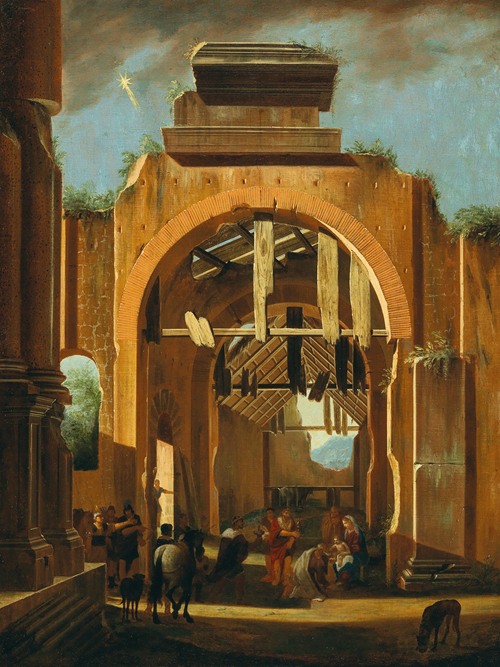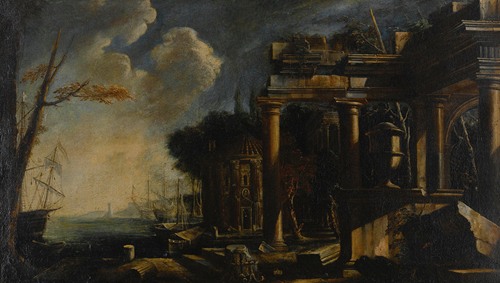
Niccolò Codazzi was an Italian painter of architectural paintings, capricci and vedute. He also created decorative elements in frescos as a painter of 'quadratura'. A son of the prominent architectural painter Viviano Codazzi, he trained with his father and was active in Rome, Paris and Genoa.
Viviano Codazzi was born in Genoa as the first born son of Viviano Codazzi and Candida Miranda. His father had moved to Genoa in 1633 to work on major commissions. His family relocated to Rome following the anti-Spanish revolt of Masaniello in 1647.
Niccolò Codazzi studied along with Vicente Giner under his father Viviano Codazzi. He later worked in his father's workshop. The works of father and son during his early period are difficult to distinguish. He was in Rome from 1675 and lived near the church of San Macuto. He was one of the artists who worked on the decoration of the piano nobile (grand salon) of the Palazzo Altieri.
Niccolò Codazzi moved to France, a move which was probably related to the fierce competition amongst painters in Rome. He was first in Aix-en-Provence where he collaborated with Nicolas Pinson. He later moved to Paris where he lived around 1681 and 1682. He clearly gained some notoriety in Paris since in 1681 he applied to enter the Académie royale de peinture et de sculpture. He was accepted thanks to Charles Lebrun's support of his candidacy.
During his French sojourn, he received a commission by king Louis XIV of France to paint landscapes with architecture for the Grand appartement de la reine at Versailles. He was commissioned to paint four large architecture paintings together with the painter René-Antoine Houasse for the queen’s stairs in Versailles.
At the end of his training in France, he returned to Italy, in all probability to Rome. He may also have spent time in Naples as some of his compositions are mentioned in the Naples collection of the prince of Galatro in 1688. In 1684 he rented a house in Zerbino near Genoa. In Genoa he worked alongside painters such as Gregorio de Ferrari and the Piola brothers. He is known to have worked with Paolo Gerolamo Piola on the decorations in the Palazzo Rosso.
At the time of his death, he was living in Genoa. He was buried in the now destroyed San Vito alla Foce.

